GamesRadar+ Verdict
The Shure SM7dB is the latest update to the world's most iconic podcasting and content creation microphone. It packs the same pure audio quality as its pedigree would suggest, and is undoubtedly one of the best microphones money can buy. That said, it's just not necessary for the majority of creators to spend this much on a mic.
Pros
- +
Excellent sound quality
- +
Versatile
- +
Improvements over the SM7B
- +
Iconic design strengths
Cons
- -
Overkill for most content creators due to its price
- -
No USB-C means you need an interface (with 48V Phantom Power)
- -
Very directional
- -
Cheaper mics have closed the gap
Why you can trust GamesRadar+
The Shure SM7dB is the first update to the brand's most iconic microphone in over two decades. Most of you will know the Shure SM7B by name, and if not, you'll have seen it in just about every professional-grade podcast video you've watched. This microphone might just be the most highly regarded one for content creators worldwide, and for good reason.
But how do you go about improving something that's so universally praised as the best microphone for streaming and gaming? Even in the wider microphone market, the SM7B is used by musicians, vocalists, radio hosts, and more. Well, the big draw with this new model is a built-in pre-amp, which provides a boost of up to 28dB of gain to optimize performance. This can be bypassed or personalized using new controls on the mic's bottom, but other than that, not a lot has changed here.
Of course, a premium brand with a luxury product line isn't going to come cheap. $499 / $499 is undoubtedly going to be overkill for the majority of creators, particularly if they're just starting out. This is indisputably one of the best microphones money can buy, but even for professionals it takes some wielding, and simply isn't necessary for the majority of creators.
Design
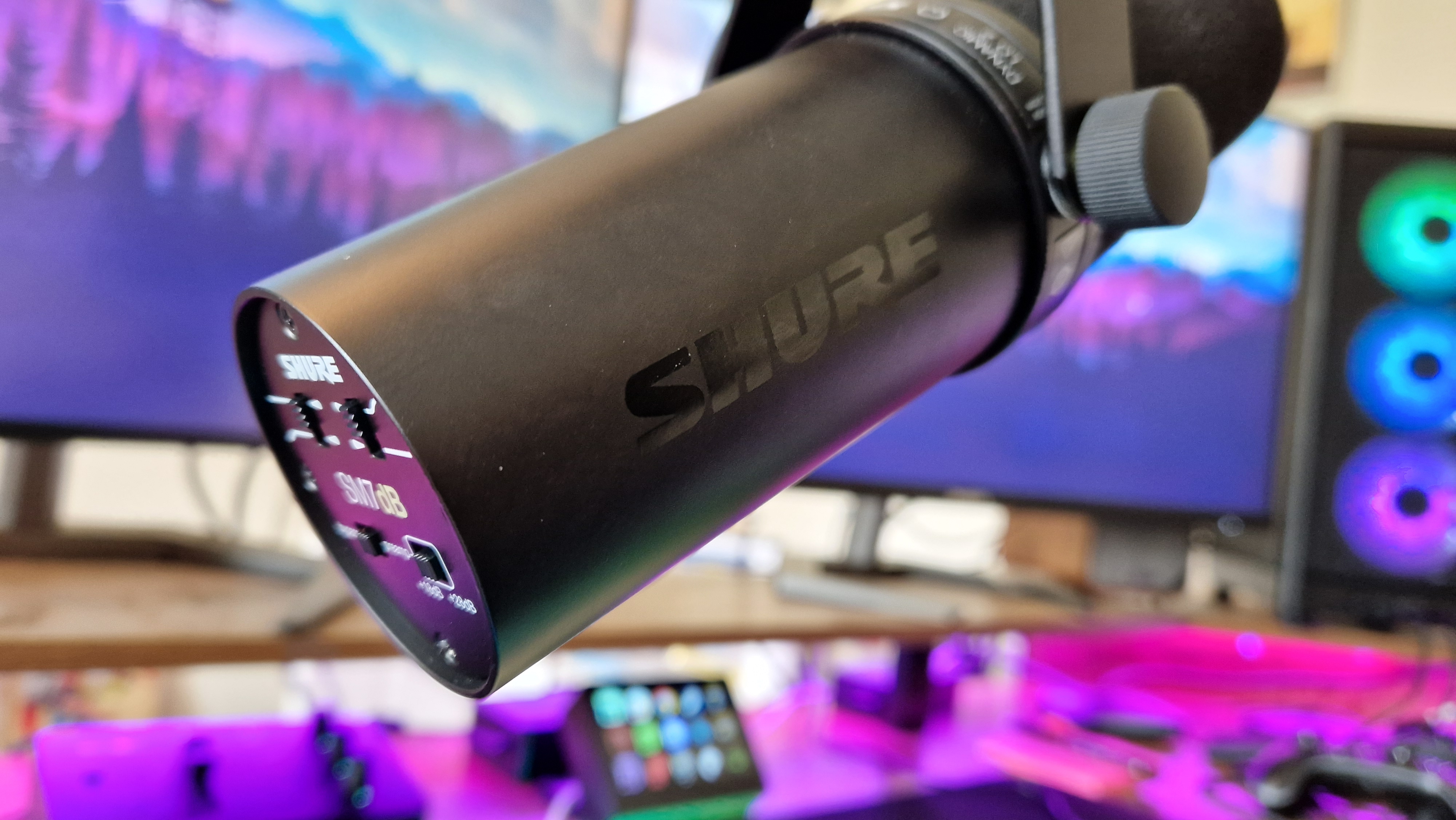
The first thing you notice when you unbox the Shure SM7dB is that it's a little longer than its predecessor. In reality, the dB is only 8.1mm taller, but it's amazing how different that makes it look. Particularly if you're sitting this on a table stand, it risks poking into your gaming display's field of view. For the most part, I'd guess that people are going to be attaching this to a boom arm, so that shouldn't be too much of an issue.
The other thing many enthusiasts have noted is that there's a bit more branding on the SM7dB. Along the mic's mid-section, there's a line of tape with some Shure logos and some green lettering. On the mic's base, there's a glossy Shure logo that sticks out from the matte black cylinder. This has been a point of contention, as this microphone appears in so many videos that it may seem like some obvious product placement or an unpaid endorsement - the lack of branding on previous versions has clearly been a big plus for independent content creators looking for the best gear for streaming.
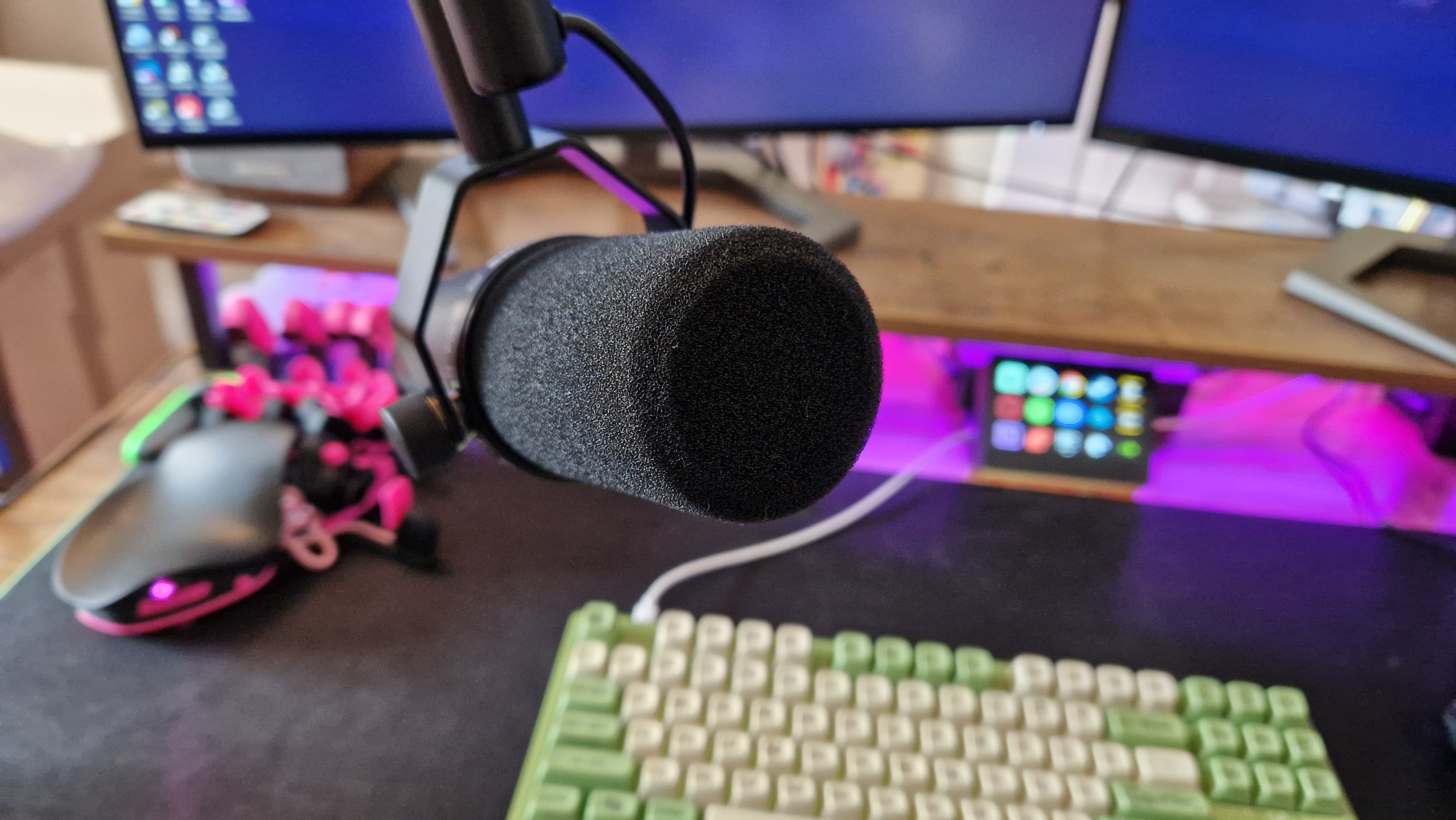
In fairness, I can't honestly fault Shure for the subtle branding they've added here. This mic is iconic, but is it synonymous with the Shure name for those who aren't in the know? Most people will see Joe Rogan, Greg Miller, or some other podcast host talk into one of these and know it as "that podcast mic", not necessarily as a product from Shure.
Besides that, you won't find many discrepancies between the SM7B and SM7dB. Both mics have a yoke mount that helps you pivot the body toward you as you gear up for your next big talking point. It's sort of the podcaster's equivalent of pushing your glasses up your nose and rolling up your sleeves. This design point doubles as a shock mount, as even accidental slaps when gesturing don't produce metallic clanging sounds. One thing I love about this mic's design is the XLR port which sits parallel to the mounting screw. It keeps cable management well out of the way and maintains the clean look of such a premium product.
Also returning is the perfectly shaped wind-guard that doubles as a pop filter. Plosives never feel unwieldy for the SM7dB, and that's a testament to Shure's substantial out-of-the-box guard.
Features
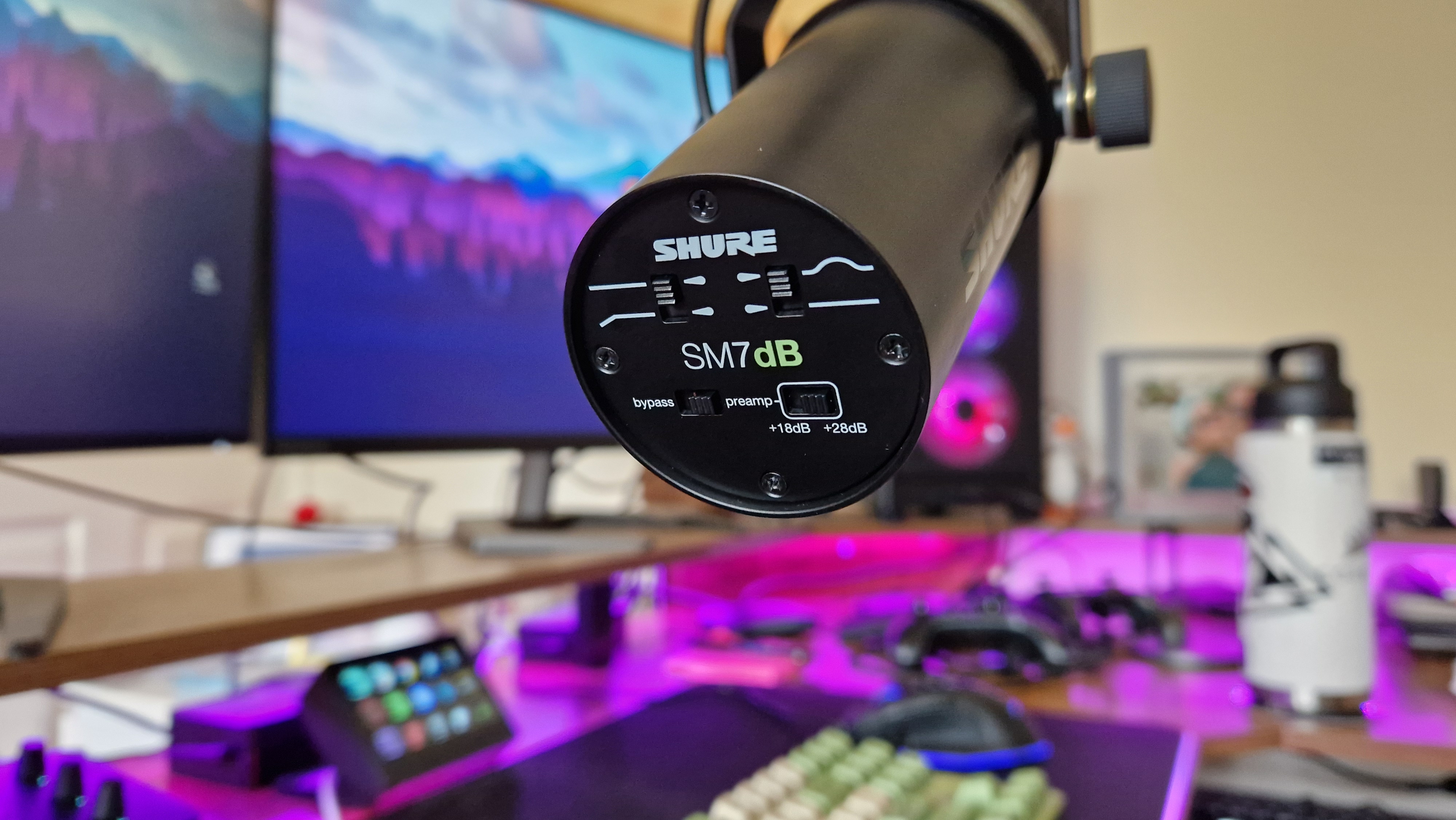
The active pre-amp is the biggest feature of the SM7dB and the reason you'll spend around $100/£100 more on it compared to the regular SM7B. This feature was added (at least partly) in response to complaints that you have to use a mid-line pre-amp or crank the SM7B to a high gain level to yield its best performance. This internal pre-amp will only work if you have an audio interface with 48V Phantom Power though, which is worth noting.
Essentially, a pre-amp converts a weak signal into a more powerful one. In the guitar and wider music world, you can often find these adding distortion to sounds too, but mainly they help with balancing audio levels from instruments versus vocals.
If you only want the classic SM7B sound, there is a bypass toggle on the bottom of the microphone. If you want to make use of it, but don't need the full 28dB, you can switch it to 18dB too. Above those two toggles, you'll find a Bass Rolloff Switch, which lets you either reduce or heighten the mic's bass response - this was welcome for me, as someone who is fairly soft-spoken and lacks the rich bassy tones of the smoothest radio talk show hosts. To the right of that, there's a Presence Boost that does a similar thing, but brightens the mid-range frequencies - ideal if you're adding some high vocals to a new track.
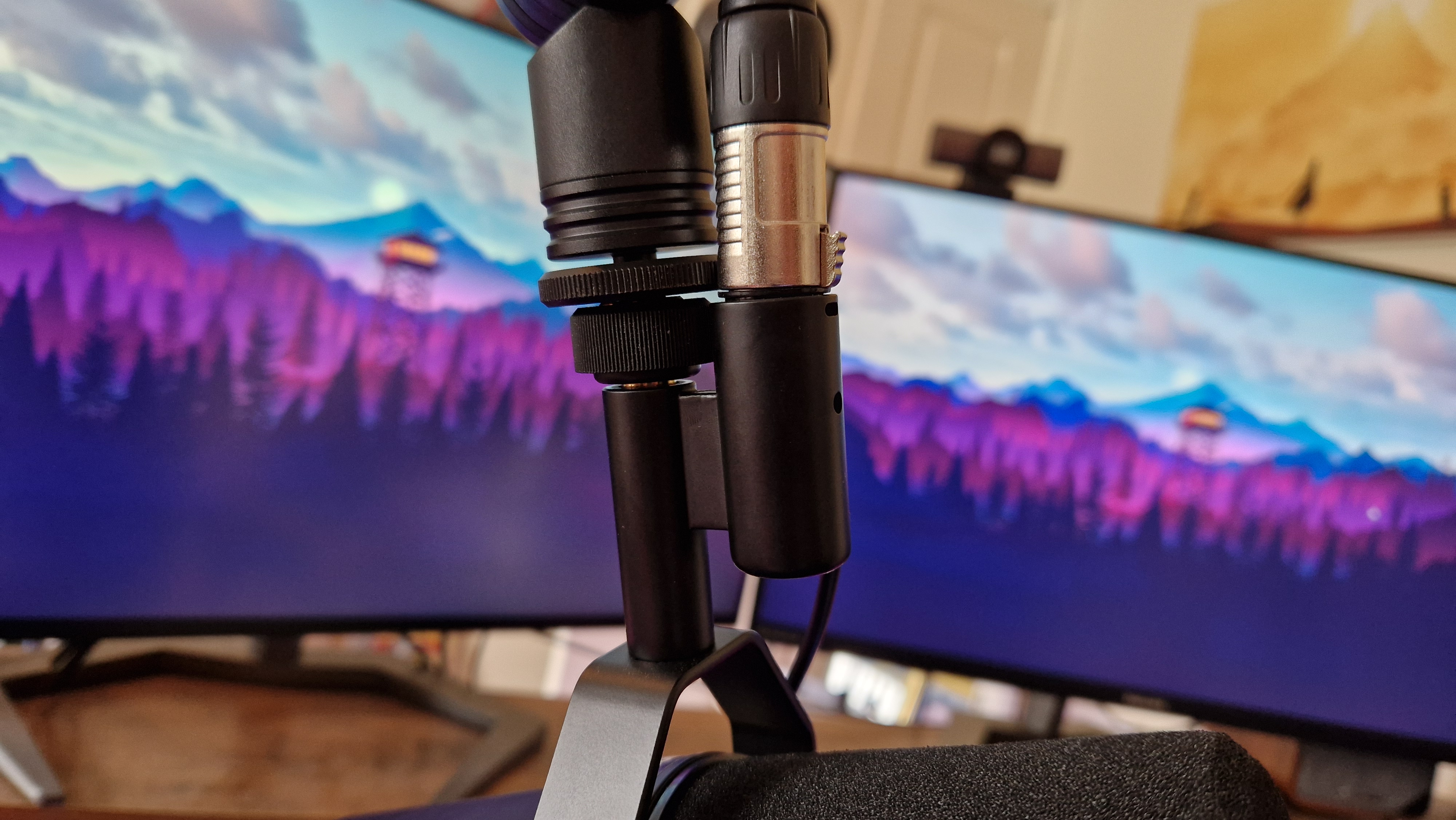
The SM7dB is a dynamic mic that features a cardioid pattern. This pattern is usually great for content creators, since a cardioid pattern captures noise directly in front of the microphone in a generous area, but rejects anything coming from 180 degrees behind it. As a streamer, that means you don't need to compromise on sound quality if you sit with your mic out of shot, and you don't need to study up on your mic technique. The SM7dB pattern certainly captures noise from further away, but its best quality comes when you seriously mind your mic etiquette and keep it closer to your face. In other words, this sucker is pretty directional.
That's great for home studios with less treatment, or creators who are worried about background noise, although a cheaper purchase of the SteelSeries Alias Pro could get you just as far. In addition, such a strict pattern does make it slightly more awkward for streamers and gamers who want their mic a bit further away. If you're in the ASMR game though, you're in serious luck.
Performance
Having listened to so many professional-sounding podcasts that were recorded on the SM7B, the SM7dB performed exactly as I expected it to. Its quality is second to none, but it didn't have the perfect out-of-the-box experience other mics do. Minding my mic etiquette became essential, configuring gain levels was a lot trickier, and even then, I felt I had to get a little closer and more direct with positioning than I had before.
Even with the pre-amp working at the full +28dB, I still felt like I had to crank the gain up pretty high when I plugged this into the Yamaha ZG02. Once I found the right level though, the sound quality the SM7dB recorded was clear as day, and honestly, a bit too pure at times. I have a tendency to speak pretty quickly when I'm recording VO for YouTube videos, and there's simply no place to hide with a mic this good. If I slurred over a syllable or had a bit of a diction misstep, I felt like I was under a microscope. These were slight errors I didn't realize I was making until using this microphone, which speaks to its quality.
I will say though, after boosting the gain up to a comfortable level, I did hear a bit more white noise than I'd like on a mic this expensive. Even with the pre-amp, bass response boosted, and things otherwise configured to my liking, I still felt I needed a bit of dynamics processing and overall editing to get a VO track to the perfect standard. Adobe Audition made short work of it though, and tracks using the SM7dB needed the least processing of any mic I've tested.

I have to say, that narrow pattern is a bit of a bit of a blessing and a curse. On one hand, if you're striving for ASMR podcast quality, or recording some music, being able to get so up-close and personal with the SM7dB is great. On the other hand, for streaming, it would be nice to have a more generous spatial allowance. There's certainly a premium setup to be had with this mic, and its improved control switches make it even more versatile than it was before. The best configuring tools will come from something like a RodeCaster Duo though, which isn't great when this microphone costs so much already. In fairness, I've heard some truly excellent live-streaming results from friends when using the SM7B with ducking effects and background music.
When I was streaming though, the slightly awkward gain leveling and narrow pattern made it less than ideal. Even using the Razer Moray in-ear monitors, I found it tough to balance the SM7dB's levels in relation to other audio sources on the fly. This did hammer home to me that not every creator needs one of these microphones. There are plenty of amazing USB-C or XLR mics aimed at streamers that may lack some of the pure quality you get from Shure, but cost way less, and are easier to use.
Should you buy the Shure SM7dB?
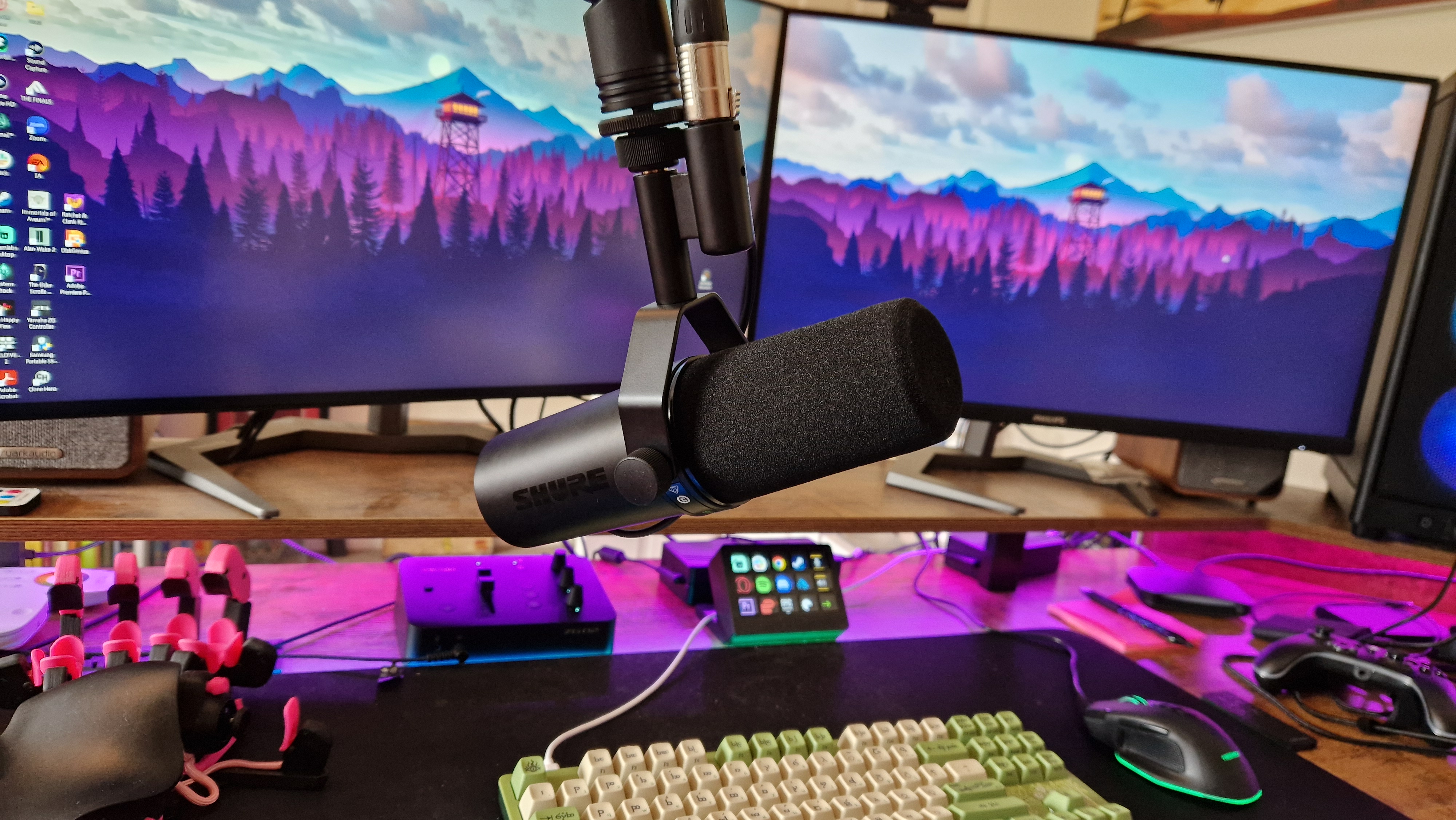
For years, the Shure SM7B has seemed to me like the endgame microphone for everyone with a podcast or YouTube channel. After finally getting to try one, I'm very impressed with the SM7dB, and I'll probably continue to use it for all my voice-over work from here on out because it simply is that good.
But do you need the Shure SM7dB? In my opinion, absolutely not. There are almost too many great microphones out there these days, and the vote of confidence you get from seeing this one out in the wild so much is a bit misleading. After testing it out, I'd actually argue there are loads of content creators who'd be better served by going against the status quo. Other microphones could offer an easier user experience and a more generous pattern. Other microphones, even USB-C mics to a certain extent, have closed the quality gap, and you do not need to spend money on this microphone to get its level of clarity anymore.
Sure enough (pun intended), if you're a professional content creator doing more than live streaming, if you dabble in music creation, voice acting, or anything that requires the utmost audio quality, the SM7dB is the last word. It takes a skilled hand to get the most out of it, but it's versatile and records the purest, most accurate audio of any microphone I've tested.
How we tested the Shure SM7dB
I connected the Shure SM7dB to my gaming PC via the Yamaha ZG02 streaming mixer and tested it for around a month before this review. In that time, I used it during live streams, video calls, and for recording voiceovers. I also recorded some music with it to test its versatility, but those tracks will never see the light of day. Throughout my time with it, I used it at varying angles and gain levels.
I attached the SM7dB to my Sennheiser Profile boom arm, and didn't use a pop filter - the yoke mount and included wind guard meant I didn't feel the need for accessories.
For more on how we test the latest gaming gadgets and streaming gear, check out our hardware policy.
Looking for more streaming gear upgrades? Check out the best capture cards, the best webcams, and the best ring lights for streaming.
One of my earliest memories is playing SuperMario64 and wondering why the controller I held had three grips, but I only had two hands. Ever since I've been in love with video games and their technology. After graduating from Edinburgh Napier University with a degree in Journalism, I contributed to the Scottish Games Network and completed an Editorial Internship at Expert Reviews. Over the last decade, I’ve been managing my own YouTube channel about my love of games too. These days, I'm one of the resident hardware nerds at GamesRadar+, and I take the lead on our coverage of gaming PCs, VR, controllers, gaming chairs, and content creation gear. Now, I better stop myself here before I get talking about my favourite games like HUNT: Showdown, Dishonored, and Towerfall Ascension.



